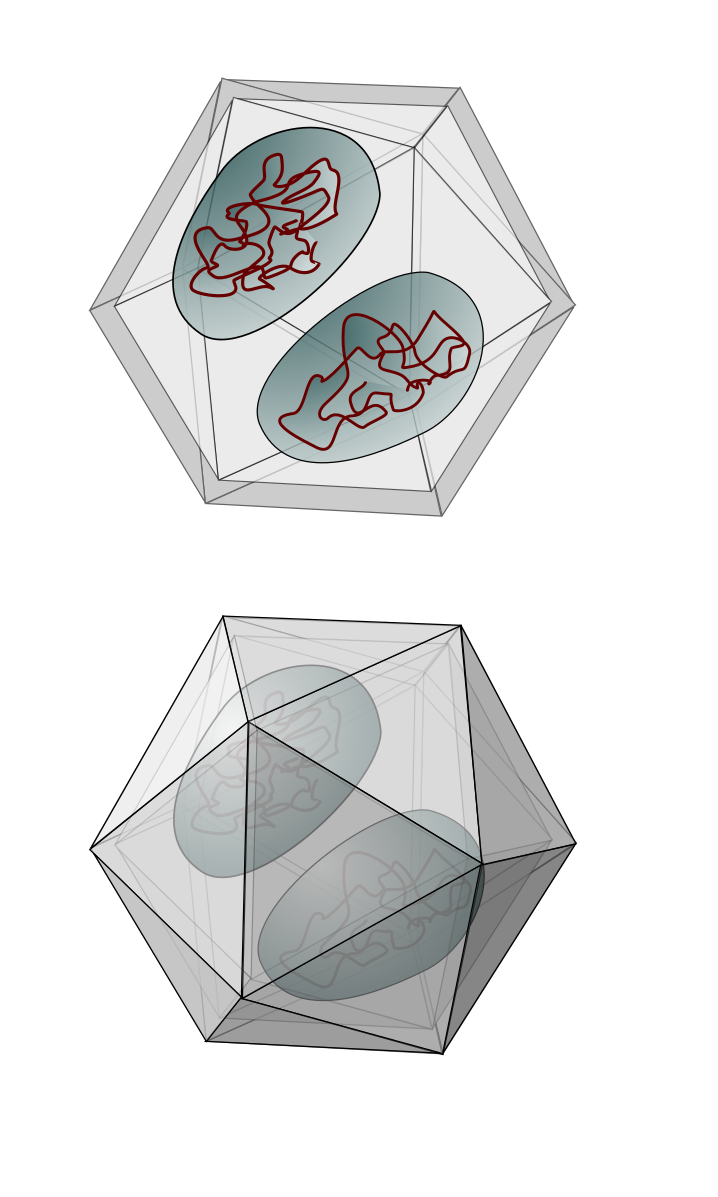On the Edge of Life
It’s a hotly debated question in the world of virology and microbiology: are viruses living or dead? While technology has come so far to help us see viruses and even see inside them, scientists can’t quite decide whether viruses are living or non-living organisms. What’s the evidence on each side of the argument? Will we ever be able to decide?
The real question that underlines the virus debate is that of what does it mean for an organism to be living. There are more than a hundred different definitions of the word ‘life’, and there seems no consensus amongst biologists. But, when discussing whether viruses are alive or not, we can take the many varying definitions of life and divide them into two groups: those that require an organism to have self-organisation and self-maintenance, and those that rely on self-replication and evolution.
Viruses don’t possess any carbon metabolism and lack any form of energy, and thus fail to meet the requirement of self-maintenance. However, viruses can evolve, meeting a requirement of the latter group of life definitions. But, as is often the case in science, everything’s not as simple as it seems. It can be argued that viruses themselves don’t evolve or replicate, viruses are replicated and evolved by the cells which they infect. Without a host cell, viruses cannot evolve, even if their genetic information encodes for their own polymerases. This sort of reasoning isn’t new, the chemist Jerome Alexander made the distinction in 1928 that viruses are produced, and not self-reproduced.
A further argument presented by those that argue viruses are not living is that there is no one single gene which is possessed by all viral species and thus have no common ancestor, like all other living organisms. Although some viruses share common protein motifs, this could be as a result of genetic convergence or horizontal gene transfer, making it poor evidence for a common ancient origin of viruses.
The discovery of giant viruses opened another line of argument, and brought to life new evidence to suggest that viruses could in fact be living organisms. The study of Mimivirus, a giant virus discovered in a water-cooling tower in Bradford, revealed that its genome was far larger and encoded far more functional proteins that were needed for a normal viral life cycle. Evidence suggested that Mimivirus was using its additional genes for more than encoding its capsid, and receptors needed for entering and hijacking its host.

What’s more, the non-coding regions of the Mimivirus had strongly conserved and unique promoters elements, suggesting that Mimivirus was part of a lineage existing at the same time as some of the first cells. Mimivirus possesses many genes, such as eukaryotic transcription factors, which have previously only been identified in living cells which are essential for translation. This new piece of evidence went against everything we thought we knew about viruses and their need for host translational machinery.
A further argument developed thanks to the discovery of Mimivirus is that something has to be living to be killed. A separate virus, called Sputnik, has been dubbed a virophage (similar to a bacteriophage which is a virus which infects bacteria, except virophages infect other viruses). Sputnik behaves like all other known viruses, using Mimivirus enzymes for its own replication, highlighting that Mimivirus could be a living cellular organism and perhaps represent a new branch in the universal tree of life and a fourth domain of life.
While Mimivirus does provide new evidence to suggest viruses could be living, we don’t yet know why giant viruses are so different to other viruses – who seem to fit more in the non-living category. It seems that, for now, in the words of virologist André Lwoff, “viruses are viruses” and continue to sit on the edge of life, to some as living organisms and to others as merely free-floating organic matter.
